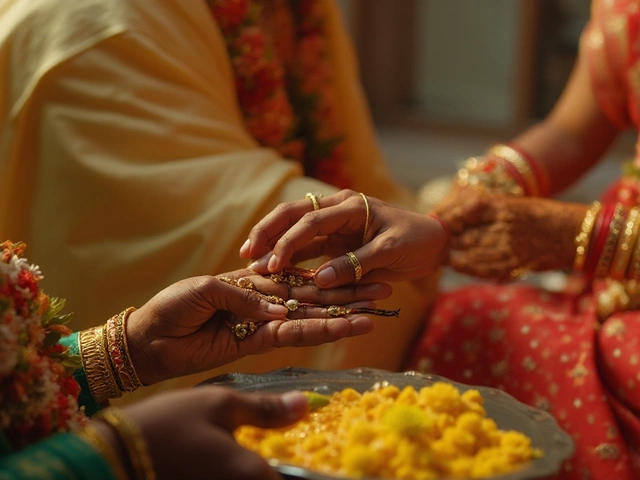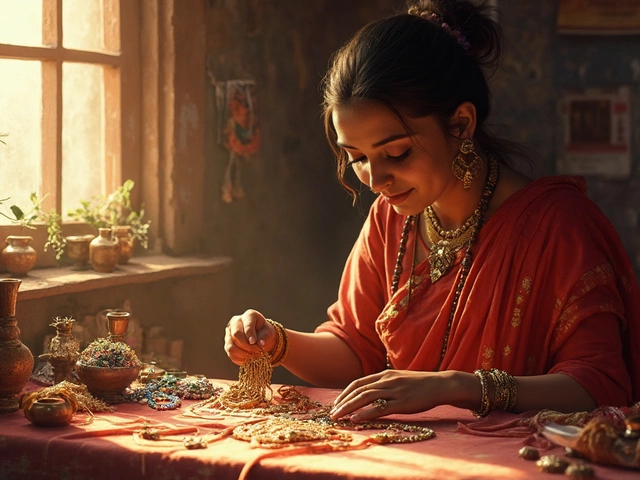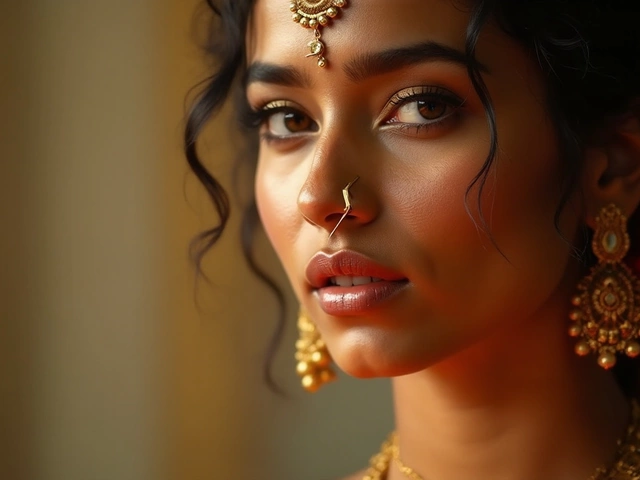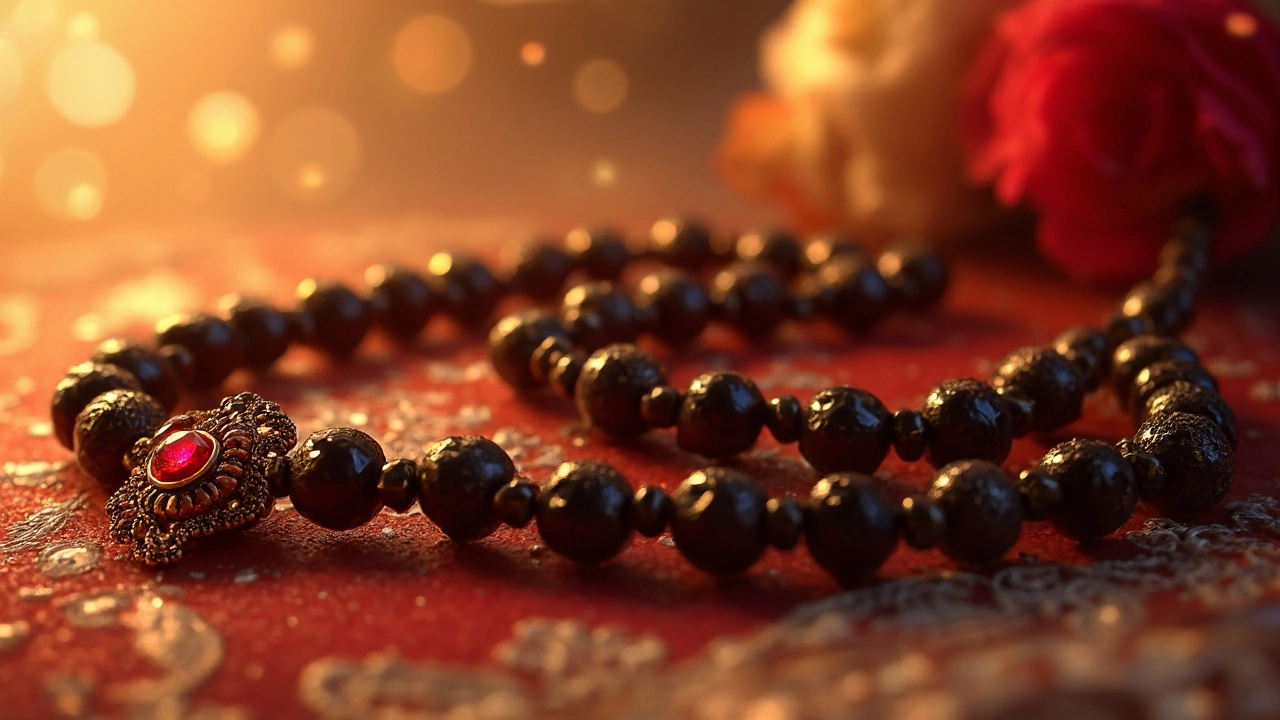
Curious why those tiny red beads are part of a mangalsutra? Turns out, they're not just for pretty decoration. Those beads hold some serious cultural weight—think love, strength, and prosperity, all tied up in one string.
The history of the mangalsutra is quite rich. This isn't just a necklace; it's a powerful symbol of marriage in Indian culture. When you see those red beads, they’re not just randomly chosen. They carry meanings linked to ancient traditions—stuff your grandma probably knows a lot about.
Historical Significance
The mangalsutra isn't just any piece of jewelry. Its history stretches back centuries, rooted deeply in Indian tradition. Worn by married women, it symbolizes marital commitment and has been a part of our culture since ancient times.
Way back, the concept of a mangalsutra as we know it today wasn't the same. Across different regions in India, it had various forms and styles but consistently represented a sacred bond. Over time, the mangalsutra designs evolved, incorporating elements like the red beads that we are curious about today.
Historical texts and mythologies often highlighted the importance of symbols in marriage. These symbols were believed to bring protection, prosperity, and happiness to the couple. The specific use of red beads likely began due to their association with auspiciousness and protection against negative energies.
Evolution Over Time
The design has evolved through different eras, influenced by cultural shifts and regional practices. While initially more simplistic, with just woven threads, today's designs incorporate gold, black beads, and of course, the red beads for a dash of tradition.
As societies modernize, many aspects adapt, but the essence remains. Younger generations might opt for sleeker, minimalist designs, but they often retain the traditional elements that carry these deep historical significances.
Symbolism of Red Beads
So, what's the deal with these red beads in a mangalsutra? First off, the color red itself is a big deal in Indian culture—it's all about love, passion, and auspicious beginnings. Just look at any traditional wedding, and you'll see red everywhere, from the bride's attire to the decorations.
But it's not just about looking pretty. These beads have some serious symbolic meaning when it comes to mangalsutra designs. In many cultures, red beads are seen as a form of protection. They keep the partnership strong and vibrant, warding off negativity. It's like having built-in good vibes on your jewelry.
Historically, these beads also stand for stability and fertility. For anyone who's serious about tradition, wearing a mangalsutra adorned with red beads isn't just a nod to the past; it's about weaving those beliefs into everyday life.
Connection to Spiritual Practices
The red beads often tie in with spiritual beliefs too. In some areas, they represent the goddess Shakti, symbolizing female energy and power. Wearing these beads is a constant reminder of the energy and strength within oneself.
- Love and Passion: Red has always been connected to deep emotions and bonding.
- Protection: Acts as a shield from negative vibes.
- Stability and Fertility: Signifies a prosperous married life.
The next time you see a mangalsutra with those distinctive red beads, you'll know they're not just accessories. They're a piece of history, a touch of culture, and a whole lot of symbolism woven into something you can wear.
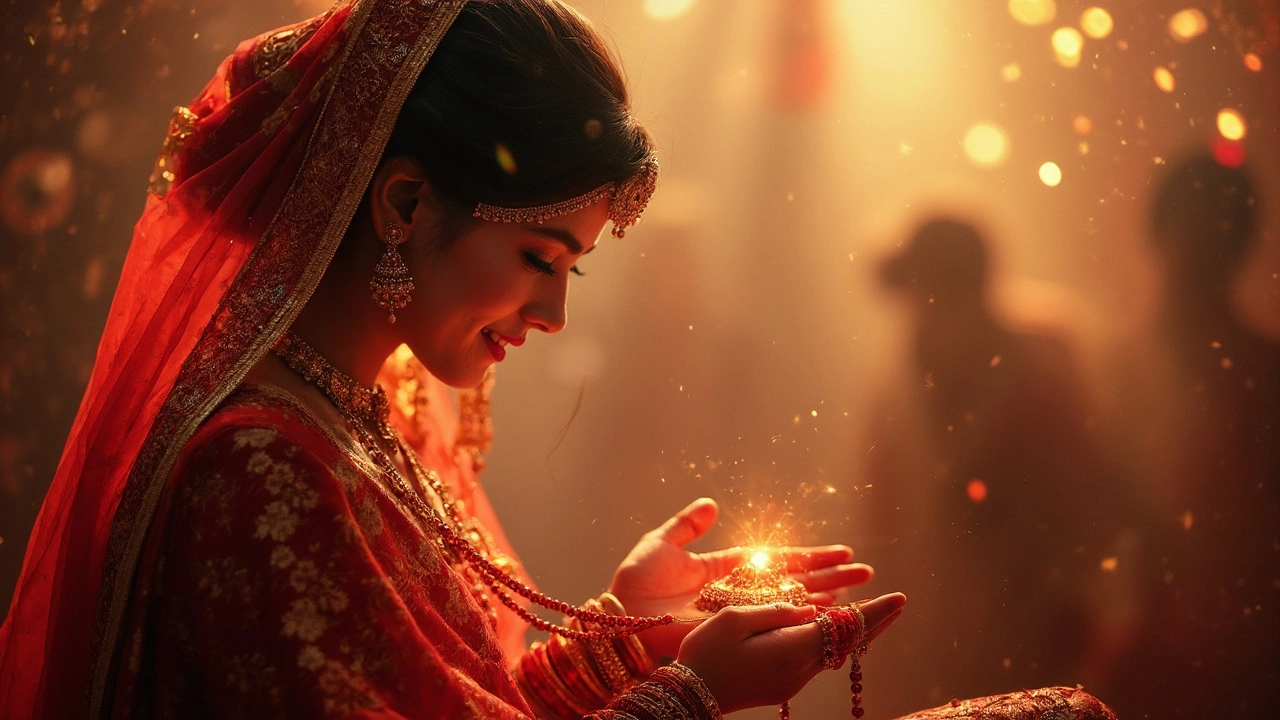
Cultural Variations
Across different parts of India, the mangalsutra designs shift in style and symbolism, yet the presence of red beads often remains constant. These variations not only reflect geographical diversity but also narrate unique love stories and traditions specific to each region.
Maharashtra: The Two-Bead Mangalsutra
In Maharashtra, a classic mangalsutra features two specific red beads, known as 'Hirva'. These beads sandwich other black beads and signify the couple's union, symbolizing how both individual souls merge into one shared journey. It's one of the simplest yet meaningful designs, which many brides adore for its straightforward symbolism.
South India: Different Colors and Beads
In the southern parts of India, the mangalsutra, known as 'Thali,' can include a mix of gold and black with occasional incorporations of red. Each region within this part—Tamil Nadu, Andhra Pradesh, and Karnataka—has its tweak on the traditional necklace. Some choose to integrate patterns like the mango or peepal leaf, emphasizing fertility alongside the deeper meanings attached to the red beads.
North India: Elaborate and Ornate
Moving upwards, in states like Uttar Pradesh and Haryana, the mangalsutra leans towards an elaborate design with a longer chain often interlaced with intricate patterns, various beads, and an extra punch of red hues. Here, the design often reflects family heritage, with each bead showcasing legacy. It's not just about an accessory—it's about conveying family roots and values.
Tribal and Rural Variations
In certain tribal and rural regions, the mangalsutra designs integrate vibrant materials besides the usual red and black, adding seashells, coins, and even vivid threads. These versions not only narrate marital status but often tell tales of everyday life and local stories. They become a canvas of personal and community expressions woven together with design.
It's fascinating to witness how a singular piece of jewelry can express such varied stories. Despite regional differences, those red beads serve as a universal symbol of love and resilience across Indian marriages.
Choosing the Right Mangalsutra
Picking the perfect mangalsutra is no walk in the park, given its deep-rooted traditions and the hefty emotional value it carries. It's not just about aesthetics—what's inside those designs matters a lot.
Considerations for Design
Let's talk design. You want something that matches your style but also respects tradition, right? Classic designs with red beads not only look beautiful but also hold that timeless appeal. If you're aiming for something more modern, streamlined designs with smaller beads can be a hit.
Quality Over Quantity
Top priority is quality. Look out for the craftsmanship. Are the beads securely fastened? Is the chain sturdy enough? You don’t want something that feels like it'll fall apart after a few wears. The quality is non-negotiable because this piece is supposed to stick with you for the long haul.
Budget
Ah, the budget! Spending wisely is key. Sets with intricate designs can get pricy, but you don't always have to splurge to get something meaningful. Some elegant variations won’t break your bank but still embody the essence of tradition beautifully.
Cultural Significance
The cultural aspect can never be sidelined. Different regions in India have unique takes on the mangalsutra designs. Northern styles might have a different bead pattern compared to southern ones. It's worth considering these regional variations to honor personal heritage.
Practicality and Durability
Last but definitely not least, consider how practical it is for daily wear. Will it snag on your clothes? Is it easy to clean? These practical questions can save you a lot of hassle down the road. Always go for something you’ll be comfortable wearing day in and day out.
So, when you're ready to pick out a mangalsutra, think of it as choosing more than just a necklace. It's about choosing a piece of culture, a slice of history, and a token of love—all in a design that screams 'you'!
